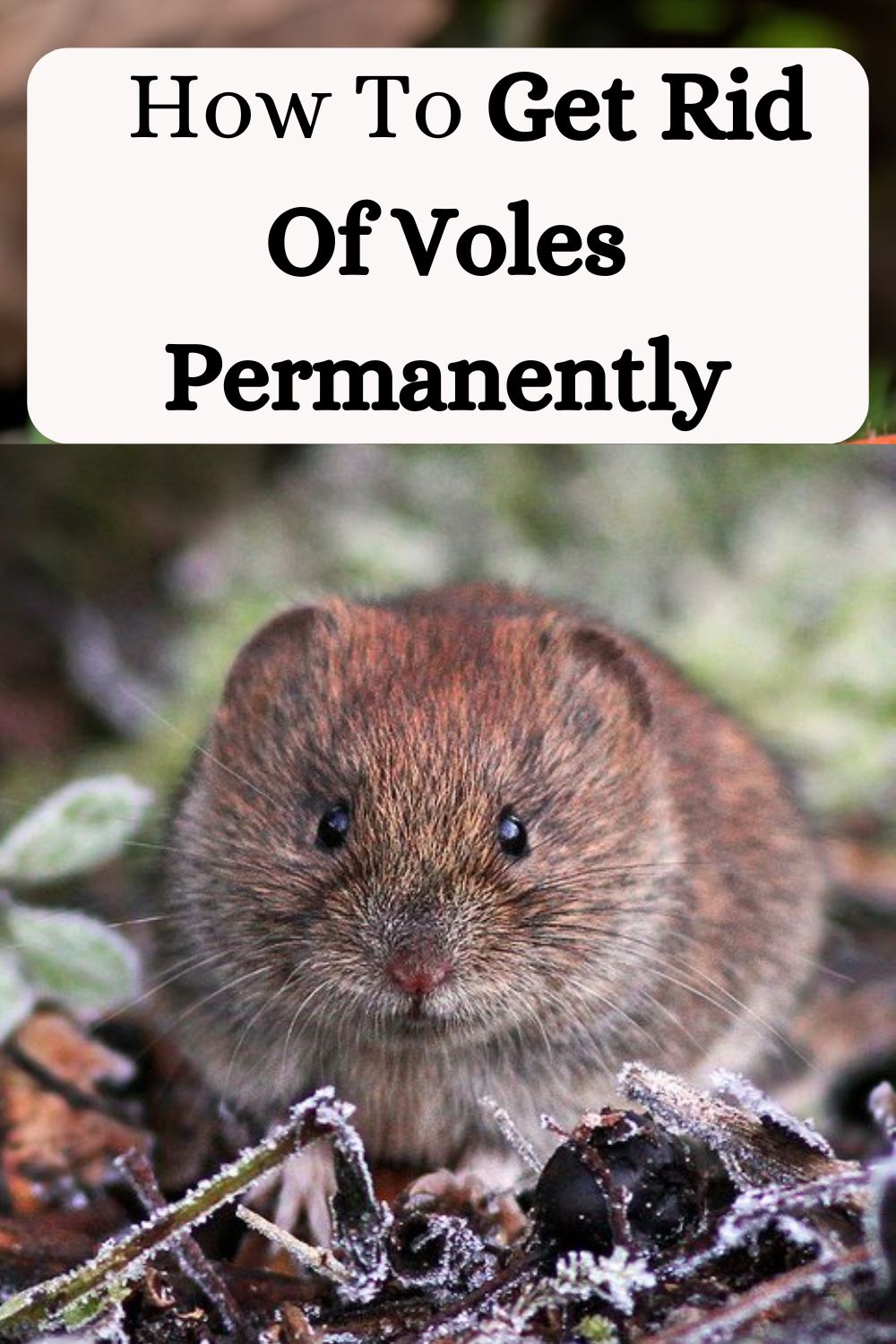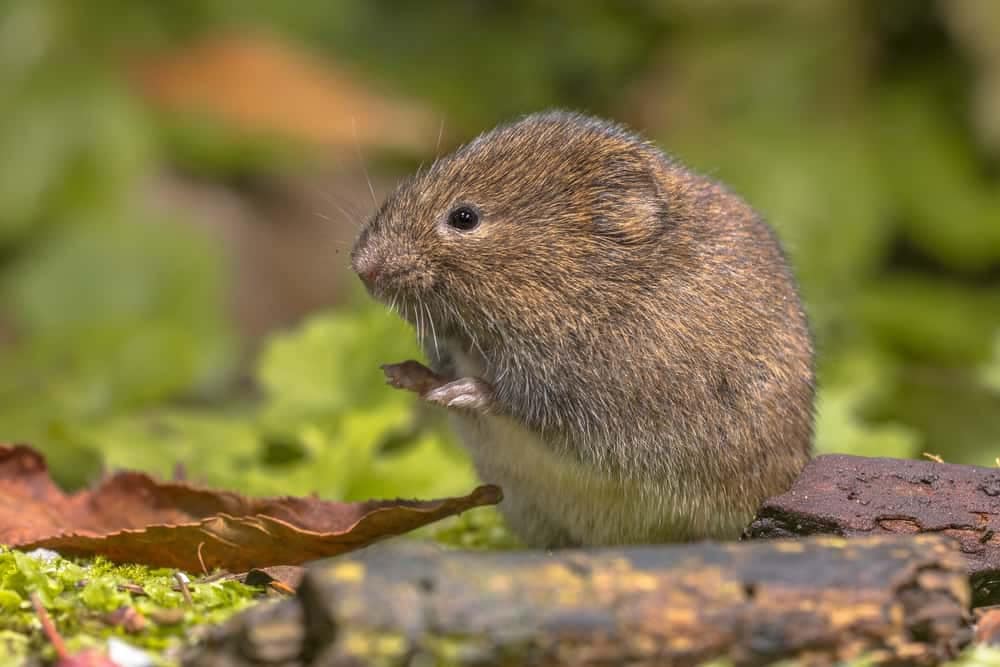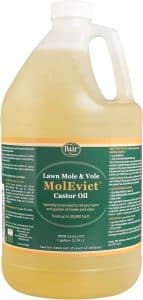They may be tiny, but voles can wreak havoc on your garden and yard if left to run freely and make your home their shelter.
They are popular for forming deep and crisscrossing tunnels and eat grasses, tubers, herbaceous plants, bulbs, seeds, and tree roots.
Therefore, you ought to know how to get rid of voles in your yard and garden or at least repel them.
Voles will make your yard their home if it has many plant debris, which offers hangout spots and food.
Vole infestation is a menace, so learn how to get rid of voles without harming your pets in this post.
What Attracts Voles?
Yards with plant debris attracts voles since it offers a place for these rodents to spend time and, most importantly, food.
Voles are more likely to invade messy lawns with hiding places and food sources. These rodents do not go inside buildings, unlike rats and mice, which tend to seek shelter indoors.
Also read: Best Ways to Get Rid of Rats in Yard Without Harming Pets
In addition, grassy clumps found above the ground surface or tunnels that extend many inches underground provide nesting spaces for voles.
These tiny rodents will come to your yard in large numbers during slightly mild, snowy winters.
Before you get rid of voles permanently, it is worth finding out why they are on your lawn in the first place.
5 Signs That You Have Voles in Your Yard
Here are some signs that you may have voles in your yard:
1. Chewed plants
Voles feed on the roots and bark of plants, which can result in the death of the plants. If you notice plants in your yard that have been chewed or damaged, it may be a sign of voles.
2. Vole’s Droppings
Voles leave small, cylindrical droppings in and around their tunnels. These droppings are about 1/4 inch in length and are often found near the entrance to their tunnels.
3. Vole burrows
Check for holes in the lawn or around tree bases. You can differentiate vole burrows from molehills since hills created by voles do not have soil mounding.
4. Active during the day
Unlike many other rodents, voles are active during the day, which makes it easier to spot them in your yard.
5. Runways
Voles create runways or paths through the grass or vegetation in your yard. These paths are usually about two inches wide and are formed by the voles repeatedly running over the same area.
If you notice any of these signs in your yard, it is important to take action to control the vole population. Voles can cause significant damage to your yard and garden if left unchecked.
Also read: How to get rid of moles with dawn dish soap
What Damage Do Voles Do?
Voles enjoy chewing vulnerable woody ornamental plants and young trees’ stems, causing severe dieback and damage. They also cause massive damage to turf, which you will discover when spring comes.
The snow cover in winter will protect voles from various predators and offer shelter. This is why you will see the signs of vole infestation “runways” when the snow melts in spring.
The runways develop when the rodents feed in the turf canopy and resemble raised tunnels inside the surface of the grass.
Also Read: How To Get Rid Of Prairie Dogs In Your Yard
Voles chew plant parts, including the growing points at the level of the ground, impeding the plant growth while feeding inside the runways.
In addition, they leave excrement layers alongside the runways, wearing down the surface of the grass using their foot traffic.
How To Get Rid Of Voles In Your Yard And Garden
Protecting your garden and yard from destructive animals like voles is essential, so here are the different methods you can employ to eliminate voles.
1. Use Natural Repellants
You can deter these pesky creatures using numerous vole repellent homemade recipes that will not hurt the environment or plants.
Moreover, there are excellent ways to get rid of voles without harming pets. Here are some best vole repellents you can use.
Mix dish soap (2 tablespoons), 100% castor oil (6 ounces), and water (1 gallon), then spray the mixture on your lawn. This way, you will use the castor oil smell to keep voles away.
b) Hot Peppers Repellent
Make this DIY vole repellent by mixing dish soap and water (water goes in first) in a spray bottle. Next, add hot peppers (diced) and spray the mixture on strategic areas of your garden or yard, like vole holes or brush piles.
2. Remove Vegetation
This is another effective natural way to get rid of voles you can employ. Voles like feeding in hidden spaces, and the vegetation in your garden or yard provide the perfect place.
Therefore, keeping your lawn mowed, removing the thick ground cover, removing snow cover, and keeping the mulch around shrubs and trees light will deter voles.
3. Attract Predators to Your Yard
Scare away voles by attracting predators like foxes, owls, hawks, snakes, and coyotes. Putting nest boxes on your property will help attract owls. Keeping dogs and outdoor cats also helps keep voles away.
4. Remove Their Food Source
Protecting young plants in your garden is another non toxic vole control that removes the voles’ source of food while preserving the environment.
Voles enjoy gnawing on young trees’ trunks, so wrap the trees’ lower trunks using guards like plastic tubing or wire mesh.
5.Use Live Traps
Live traps for voles trap these rodents without injuring or killing them. However, this method is not ideal for severe infestations but effective in removing a few voles.
6. Conventional Methods
Conventional methods of eliminating voles include poison and kill traps. Compared to homemade vole poison, traditional poisons are effective and fast but are not risk-free. Here are your options.
a) Traps
Vole traps are effective in getting rid of large populations of these rodents, killing voles instantly. Put the traps on vole hole openings and bait them using oatmeal and peanut butter.
b) Repellents
Chemical-based vole repellents effectively push out the voles that have created burrows in your yard or garden and motivate them to leave and stay out of your home.
However, this may not be the best method if you want to get rid of voles without harming pets since chemicals can poison them.
c) Vole Poisons
Vole poisons kill these rodents if they ingest them, killing them 12 to 24 hours after consumption.
Best Vole Poisons
- Kaput Rat Mouse Vole Bait
- Neogen Ramik Green Fish Flavored Weather Resistant Rodenticide Nuggets
- Tomcat With Bromethalin Bait Chunx Pail
7. Contact a Pest Control Company
If the vole infestation in your yard or garden is too severe and eliminating these rodents yourself does not work, seek the help of professionals.
Pest control companies use various methods to get rid of pesky rodents on your property.
A pest control company will help provide long-term solutions to vole infestations. However, this method costs more than other methods.
What Diseases Do Voles Carry?
Voles do not pose a physical threat to you, but they carry diseases that can be transmitted to domestic pets and humans.
For instance, these rodents can introduce diseases and parasites such as the Machupo virus, leptospirosis, and salmonellosis if they defecate or urinate in your place.
How Is a Vole Different From A Mole?
The first difference is vole is a rodent while a mole is a small mammal. Voles are 5 to 8 inches long, with large teeth, compact and round bodies, small eyes, and short tails.
On the other hand, moles are 4 to 7 inches long, with prominent claws, elongated snouts, distinctly-shaped heads, and paddle-shaped, large feet.
In addition, they have brown-gray, dense bodies without grain. However, voles are smaller than moles.
Voles enjoy gnawing on young trees’ barks, roots, and grass since they are herbivores, while carnivorous moles feed on dead animals and insects.
However, they are both burrowing animals, but the entry points to mole burrows have mounds, while vole burrows do not.
Frequently Asked Questions
Do Coffee Grounds Deter Voles?
Coffee grounds can deter voles because they contain caffeine that is fatal to these rodents, so sprinkle some coffee grounds in your garden or yard to keep voles away.
This easy and affordable method will also make your lawn smell pleasant. You can scatter the coffee grounds, hang them in a mesh bag, or mix them with water.
Coffee grounds will also serve as a natural fertilizer, add nutrients to your garden or yard soil, and keep other pests away, like slugs and ants.
Does Garlic Keep Voles Away?
The smell of garlic in your garden and yard can repel voles and keep other pests from attacking young trees. Natural repellent is frequently used to stop pests such as squirrels from damaging plants.
Crush and peel garlic cloves and put them into vole tunnels, then wait for the pungent odor to drive them away. Alternatively, let crushed garlic soak in warm water for a few minutes, mix the garlic water with liquid soap in a spray bottle, and then apply it to your garden or yard.
What Time of Day Are Voles Most Active?
Voles don’t hibernate, so they stay active all day long, day or night, but their activity might reduce at certain times of the day.
Nonetheless, these rodents are most active during dusk and dawn when looking for shelter and food.
Conclusion
The garden or yard you worked hard to maintain can be quickly ruined by vole infestation. They will destroy your plants and grasses, so take practical, effective, and long-lasting methods of eliminating voles.
Also, removing voles from your home is in your best interest because they carry diseases in their feces and urine.

Hey there, I’m Derek Schew, a writer for Lawnholic.com, where we cover everything and anything related to lawns. As someone who’s spent countless hours tending to my own lawn, I’m passionate about sharing my knowledge and helping others achieve the perfect yard. From lawn care tips to product reviews, I’m committed to providing our readers with the most accurate and up-to-date information available. So whether you’re a seasoned lawn enthusiast or just getting started, I invite you to join our community and discover the joys of a lush, green lawn.



